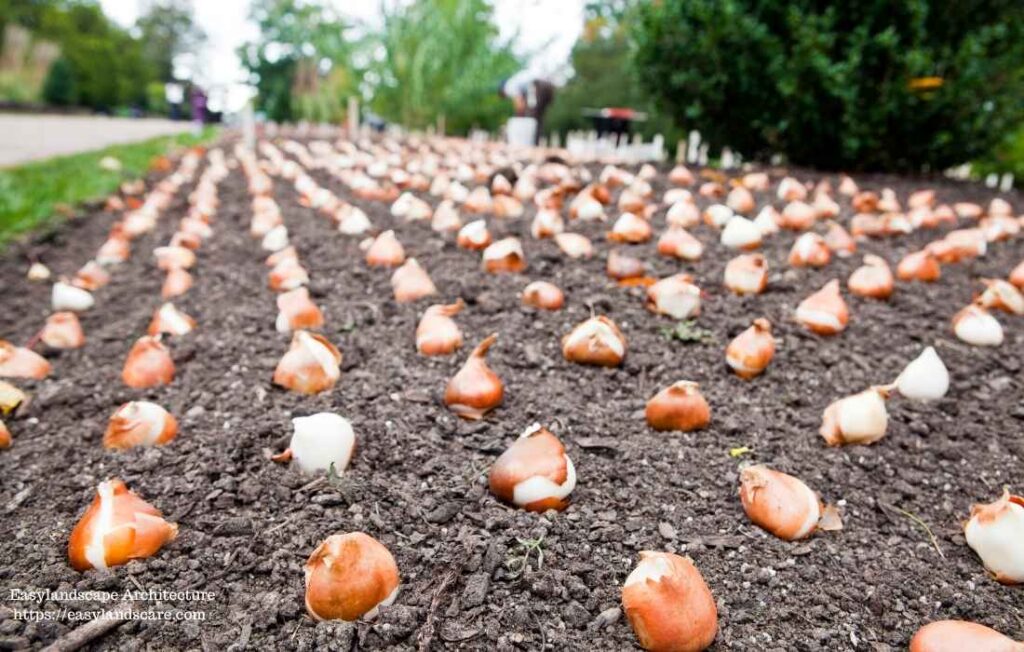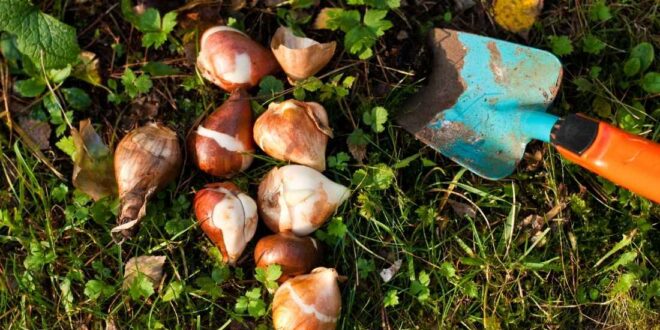Introduction
There’s something truly special about seeing those first splashes of tulip color in the spring, isn’t there? It’s a little bit of magic right in your own garden or on your balcony. Now, you could pop down to the nursery for already grown plants, and that’s perfectly fine. However, if you’re looking for a way to get more blooms for your buck and enjoy the satisfaction of nurturing them yourself, then learning about planting tulip bulbs is a wonderful choice.It might seem like a bit more effort at first, but trust me, it’s worth it. When you plant those bulbs with care, they thrive better. The show they put on will be longer-lasting and even more spectacular.
Why Give Tulip Bulbs a Go? The Joys of This Gardening Activity

You might be thinking that planting bulbs sounds a bit more involved. And yes, it takes a little more planning than picking up a potted flower. But the good things about it are pretty compelling. For starters, it’s often much kinder on the wallet – a single tulip bulb usually costs quite a bit less than a grown plant. Plus, you’ll find so many more amazing varieties to choose from when you buy bulbs. Tulips grown from bulbs directly in your garden often settle in better. When their simple needs are met, they can reward you with blooms for a long time.
When to Plant Tulip Bulbs?
Getting the timing right is a really important step for your tulip bulbs. If you plant them at the best time, your bulbs will grow strong roots. This will happen before winter arrives. This way, they’ll be all set to sprout and show off their beautiful flowers when spring rolls around.
Think Autumn for Planting:
Generally, the ideal season for this garden task is in the autumn. For many of us in the Northern Hemisphere, this means sometime between September and November.
It’s All About Soil Temperature:
More than just looking at the calendar, though, it’s the soil temperature that really tells you when it’s time. You’ll want to wait until the soil has had a chance to cool down after the summer heat. A good rule of thumb is to plant when the soil temperature is consistently below 15°C (60°F) where the bulbs will sit. If you plant bulbs when the soil is too warm, they might be more prone to diseases. They could even try to sprout too early. If you wait too long and the ground freezes, digging becomes a real challenge. Additionally, the bulbs might not have enough time to establish their roots.
A Little Different Everywhere:
Of course, the exact best time can change a bit depending on where you live. If you’re in a colder area (say, USDA zones 4-5), you’ll likely be planting a bit earlier in autumn, maybe September or October. For those in warmer spots (like USDA zones 6-7), planting can often happen a bit later, from October into November, or sometimes even early December if your winters are very mild. It never hurts to see if your local gardening experts or agricultural extension office has some advice tailored for your specific area.
Buying Your Bulbs:
You’ll usually see tulip bulbs for sale in late summer and early autumn, which lines up nicely with when you’ll want to be planting them. It’s a good idea to try and buy your bulbs fairly close to when you plan to plant them, so they’re nice and fresh. If you need to store them for a while, keep them in a cool, dry, and dark place. Make sure the area has good air movement.
By paying close attention to these timing tips, you will give your tulip bulbs the best possible start.
Key Preparations Before You Start Planting tulip bulbs
You know, a little bit of preparation before those tulip bulbs actually go into the soil can make all the difference. Good planning really is the secret to a stunning spring show, and it’s a vital part of the planting tulip bulbs process.
Picking Out Good Quality Tulip Bulbs
The journey to beautiful tulips really starts with the bulbs themselves; they are the foundation for great results. Selecting healthy bulbs is a crucial first step.
- Take a Good Look at Your Bulbs: Before you buy them, check each tulip bulb carefully. Do the same before planting them in the ground. You’re looking for bulbs that feel firm and plump – not soft, squishy, or showing any signs of mold. It’s best to pass on any bulbs that look dried out, shriveled up, or have big blemishes. Sometimes that papery outer skin, called a tunic, might be a bit loose or even missing in spots. That’s usually okay, as long as the bulb itself feels solid and healthy.
Finding the Perfect Spot
Where you plant your tulip bulbs will greatly affect how well they grow. It will also influence how beautifully they flower. The right location is essential.
- Sunshine Matters: Tulips really do love the sun, though they can also do well with a bit of partial shade. For the most impressive blooms, try to find a spot that gets at least 6 hours of direct sunlight each day while they’re growing.
- Good Drainage is a Must: This is super important: tulip bulbs need soil that drains well. They really don’t like to sit in soggy, wet conditions, as this can cause the bulbs to rot. If your garden has heavy clay soil, it’s a great idea to mix in some organic matter like compost or well-rotted manure. This helps the water drain through better and also makes the soil richer. A soil pH that’s slightly acidic to neutral (around 6.0-7.0) is just about perfect.
Deciding on How Many Bulbs You’ll Need
For a really eye-catching display, planting a good number of bulbs close together often works best.
- Have a Look at Your Space: First, it’s helpful to measure the area where you’re thinking of planting your tulips.
- Some Guidelines on Numbers: If you’re dreaming of a thick carpet of tulips in your flower beds, you might want to aim for about 100-150 tulip bulbs for every square meter. If you’re planting in smaller groups, perhaps along a walkway or in pots, you can adjust this, but generally, planting them a bit closer together gives a fuller, more impressive look.
The Planting Process: A Step-by-Step Guide for Planting tulip bulbs
Once you’ve chosen quality bulbs and prepared the perfect spot, it’s time to have fun by planting those bulbs in their new home! This section details the core techniques for successful planting tulip bulbs.
Getting the Soil Just Right is So Important
If a welcoming bed is made for your tulip bulbs, strong roots will be encouraged to grow. This soil preparation is a vital step.
- Clear the Decks: Any grass, weeds, stones, or other bits and pieces should be cleared from the planting area. Tools like a hoe, shovel, or a garden fork can be really handy for this job.
- Enrich the Soil: After the area is cleared, it’s time to make the soil a bit richer. You can mix some well-rotted compost into the top 12-15 inches of soil. A balanced fertilizer or even some bone meal can also be added. This gives the bulbs the nutrients they need and helps the soil structure. These goodies should be mixed in well with the soil that’s already there.
- Check the Soil Moisture: Before planting, the soil should be moist, but definitely not soaking wet. If it feels very dry, it’s a good idea to give it some water a day or two before you plant. On the flip side, if it’s really wet, it’s better to wait for it to dry out a bit. Bulbs can be damaged if they’re planted in soil that’s either too dry or too soggy.
Digging the Holes and Placing Your Bulbs Correctly
Making sure the depth and spacing are right is pretty vital for your tulips to grow up healthy and strong. This careful attention during the planting tulip bulbs activity is key.
- Time to Dig: If you’re planting just a few bulbs or small clusters, you can dig individual holes. If you’re planting a lot, sometimes digging a wider trench is easier. A good general rule for how deep to plant is about two to three times the height of the bulb itself. So, for most tulip bulbs, this means they’ll be planted about 10-15 cm (4-6 inches) deep. The holes or the trench should also be a bit wider than the bulbs, so their roots have room to spread out.
- Giving Them Space: To get that lovely, dense look, space your tulip bulbs about 3–5 cm (1–2 inches) apart. If you want a more spread-out look, plant the bulbs farther apart. For really big varieties, increase the spacing to about 10–15 cm (4–6 inches).
- Pointing Them the Right Way Up: This is a really crucial step. Place each bulb into its hole with the pointy end facing upwards. If you’re using a trench, arrange them the same way. That pointed end is where the stem and leaves will come out. The flatter, sometimes broader end is where the roots will grow from.
- Tucking Them In: The bulbs should then be gently covered with the prepared soil. Try to do this without knocking them over or damaging those pointy tips. You can then lightly firm down the soil over the bulbs, which helps eliminate any air pockets.
A Little Drink and Maybe a Blanket
These last couple of steps in the planting process help the bulbs settle in and give them some protection.
- First Watering: After planting, the area should be watered thoroughly. This helps the soil settle nicely around the bulbs and gives them the moisture they need to start growing their roots.
- Mulching (Optional, but a Good Idea): Spreading a layer of organic mulch, about 2-3 inches deep, over the planting area can be really helpful. Things like shredded bark, straw, or leaf mold work well. Mulch helps to keep the moisture in the soil, stops too many weeds from growing, and also acts like a bit of an insulator for the bulbs against really cold or hot temperatures.
Aftercare: Essential Steps After Planting tulip bulbs
Your job isn’t quite over once those bulbs are tucked into the ground. Looking after them a little, especially after you have finished planting your bulbs, goes a long way.
Keeping Your Newly Planted Bulbs Safe
- Pesky Critters: Sometimes, squirrels or other little critters can dig up and nibble on tulip bulbs. If this is something that happens in your garden, you might think about laying down some chicken wire or hardware cloth over the planting area (it can go under the mulch). There are also repellent sprays that can be used.
- Avoiding Accidents: It’s a good idea to mark where you planted your bulbs, especially if they’re in a bed with other plants. This will help you avoid accidentally digging them up or stepping on them before they appear in the spring. A low fence or some simple plant markers can do the trick.
Looking After Them in Spring and Summer
- Watering in Springtime: Once you see those little shoots poking through in the spring, try to make sure the soil stays consistently moist, especially if you have any dry spells.
- A Little Food (Optional): If your soil isn’t very rich, you can apply a balanced liquid fertilizer when the leaves first appear. You can apply it again just as the flowers start to fade.
- Deadheading the Flowers: After your tulips finish blooming and the flowers fade, you should snip off the flower stalk. This stops the plant from using its energy to make seeds. Instead, the plant sends that energy back to the bulb. This helps the bulb prepare for next year’s flowers.
- Let the Leaves Be: It’s really important to let the tulip leaves turn yellow and die back naturally after the flowers fade. Please don’t cut them off too soon! Those leaves are busy making food (through photosynthesis) and sending all that good energy down to the bulb for the next season’s show. Once the leaves turn completely yellow or brown and wither, you can remove them.
Conclusion
If you follow these simple steps for successfully planting tulip bulbs, you’ll be well on your way to enjoying a truly breathtaking show of color. You’ll see this beautiful display in your garden or on your balcony when spring returns. Happy gardening, and here’s to a beautiful bloom season!
Click here to read the University of Minnesota article on planting tulip bulbs.





